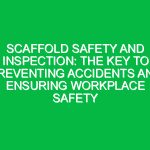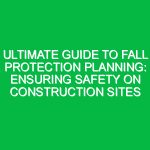When it comes to trenching and excavation work, safety should always be the top priority. These types of projects can be dangerous if proper precautions are not taken. In this article, we will discuss some essential safety tips to ensure a secure work environment for everyone involved.
Understanding the Risks
Before we delve into safety tips, it’s important to understand the risks associated with trenching and excavation work. Some of the common hazards include cave-ins, falling debris, hazardous atmospheres, and equipment accidents. These risks can result in serious injuries or even fatalities if safety measures are not followed.
Essential Safety Tips
1. Conduct a Site Assessment
Prior to starting any trenching or excavation work, it’s crucial to conduct a thorough site assessment. This includes identifying any underground utilities, determining soil stability, and assessing the risk of cave-ins. By understanding the site conditions, you can implement appropriate safety measures to mitigate potential hazards.
2. Follow OSHA Guidelines
The Occupational Safety and Health Administration (OSHA) has specific guidelines for trenching and excavation work. It’s important to familiarize yourself with these regulations and ensure compliance at all times. OSHA regulations are in place to protect workers and prevent accidents on the job site.
3. Provide Proper Training
All workers involved in trenching and excavation work should receive proper training on safety procedures and protocols. This includes training on how to properly use equipment, how to identify hazards, and how to respond in case of an emergency. Regular training sessions can help ensure that everyone is aware of the risks and knows how to stay safe.
4. Use Protective Equipment
Personal protective equipment (PPE) is essential for trenching and excavation work. This includes items such as hard hats, safety glasses, gloves, and steel-toed boots. PPE can help protect workers from falling debris, hazardous materials, and other potential hazards on the job site.
5. Implement Safe Trenching Practices
When digging trenches, it’s important to follow safe practices to prevent cave-ins and other accidents. This includes sloping, benching, or shoring the trench walls to ensure stability. Trench boxes or shields can also be used to protect workers inside the trench from collapsing soil.
6. Monitor the Work Area
Regularly monitoring the work area is essential to ensure that safety measures are being followed. This includes checking for signs of soil instability, inspecting equipment for damage, and ensuring that workers are following proper procedures. By staying vigilant, you can prevent accidents before they happen.
7. Establish Emergency Procedures
In case of an emergency, it’s important to have clear procedures in place to ensure a quick and effective response. This includes designating a safety officer, establishing communication protocols, and providing first aid training to workers. Having a plan in place can help minimize the impact of accidents on the job site.
Summary
When it comes to trenching and excavation work, safety should always be the top priority. By following these essential safety tips, you can create a secure work environment for everyone involved. Conducting a site assessment, following OSHA guidelines, providing proper training, using protective equipment, implementing safe trenching practices, monitoring the work area, and establishing emergency procedures are all key steps to ensuring a safe work environment. Remember, safety is everyone’s responsibility, and taking proactive measures can help prevent accidents and injuries on the job site.
Stay safe and happy trenching!


